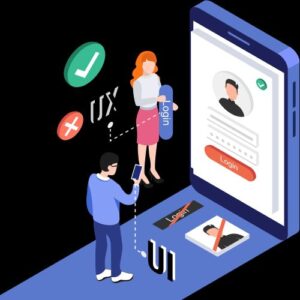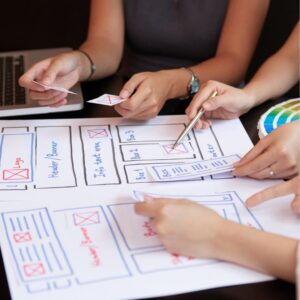User Experience Design: What you Should know

User experience design is how design groups create products that provide customers with significant and appropriate experiences. User experience design contains elements of branding, creation, usability, process, and the entire procedure of acquiring and incorporating the product.
UX refers to everything that affects a user’s interaction with a digital product in the field of digital creation. When individuals operate a physical product or software, they base their choices on value, function, usability, and overall appearance.
UX Designer’s range of work has a broad of applications:
“User Experience Design” is occasionally used interchangeably with terms like “User Interface Design” and “Usability”, in complement to UI Design. Usability and user interface design is essential parts of UX design. Still, they are simply a tiny part of the entire equation. UX design contains many other subjects. The responsibilities of a UX designer are to develop and incorporate the product in all aspects of development, including branding, design, usability, and function. It’s a story that begins before users get their hands on the gadget.
Products that deliver a superb user experience follow the whole procedure of acquiring, holding, and troubleshooting. UX designers, meanwhile, don’t just focus on creating usable goods; we also evaluate other parts of the user experience, such as entertainment, efficiency, and fun. As a result, there is no universally acknowledged purpose of a good user experience. A good user experience, on the other hand, provides a specific user’s requirements in the environment in which they use the product.
- UX designers concentrate on why, what, and how people utilize products:
A UX designer should consider the Why, What, and How to utilize the product. The Why refers to a user’s justifications for adopting a product, whether linked to a task they want to achieve or the values and mindsets that consumers recognize with product right and its use. The functionality of a product guides to what people can accomplish with it.
Finally, the How is concerned with designing a practical design that is affordable and attractive to the eye. To develop products that consumers can form significant experiences with, UX designers start with the Why, the What, and How.

2. UX design is different from UI design:
UX (user experience) design is continually confused with UI (user interface) design. Because many people link the word “design” with illustrations, this is the case. Although the user interface is a critical aspect of the user experience, it is only the product’s surface coating. As they form the aesthetic function, UX designers think outside the surface coating, bridging the gap between how something appears and functions.
3. UX design is user-centric:
UX design is a multidisciplinary career that spans the entire user journey. UX designers come from various surroundings, including web and graphic design, computer programming, engineering, psychology, and interaction design. When designing for humans, feel a broad range of accessibility problems and adjust possible user physical conditions, such as problem catching small print.
Designers must support for users and keep their needs at the fore of all design and development activities. User research, developing personas, sketching wireframes and interactive prototypes, and testing hypotheses are everyday tasks for a UX designer. Most UX designers embrace user-centered design and continue directing their best-informed efforts until they have handled all the relevant challenges and user needs to their fullest potential.

3. UX design must include business objectives:
Having a product that falls to complete or contribute to a company’s business purpose is of no use. Since UX ultimately is changing business all around, therefore, the product makers need to think both user and company objectives. It’s crucial to balance these two perspectives.

Conclusion-
UX designers are an essential element of the process since good UX is crucial to the victory of your product and business. You will gain loyal customers who support your business and sermonize your product. If you place your customer’s conditions at the center of your design, learn about their anticipations, and beat them.
